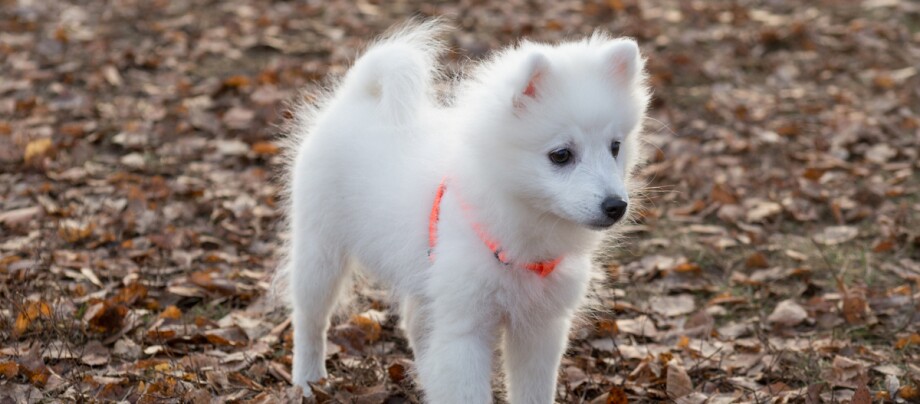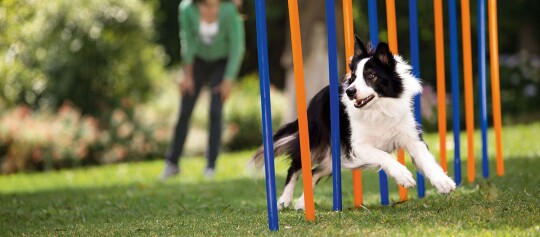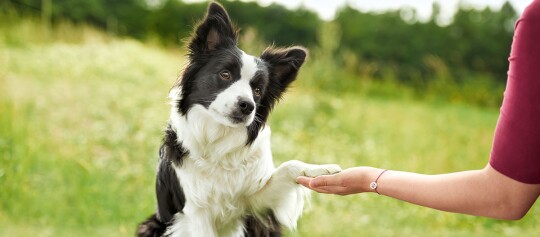Japanese Spitz - Alert Little Dog That Is Enchantingly Elegant
07.10.2022 - Reading time: 3 minutes

Nihon Supittsu is the name of the Japanese Spitz in the land of the rising sun. This elegant miniature dog has not been at home there for very long, in comparison with other venerable traditional breeds. Although it has a striking resemblance with the German large or medium-sized Spitz, the Japanese Spitz differs from its European counterparts in a number of respects. The most important plus point in its favour is that it is not a yapper.
NewsletterJapan Spitz
Breed | Japan Spitz |
Origin | Japan |
Classification | Companion dog |
Size | 30 to 38 centimetres |
Weight | approx. 4.5 to 11 kilograms
|
Physique | harmonious, elegant body structure, almost square proportions, low, broad chest, small head with narrow snout, fan-like tail carried on the back |
Eyes | medium-sized, almond, dark |
Ears | triangular, held upright |
Coat and colour | lush coat with straight, upright outer coat and thick undercoat; short on the face, ears and front of the forelegs; mane on the neck, shoulders and chest; exclusively pure white |
Special features | low hunting instinct |
Nature | intelligent, vigilant, friendly, playful |
Health | Tendency for luxating patella, distichia, and blocked tear ducts |
Japanese Spitz: history of the breed
The origins of the Japanese Spitz cannot be definitely explained. However, there may be a direct relationship with the German Spitz, which was brought to Japan at the start of the 20th century through China via Russia. Spitz dogs were also imported for breeding from China and North America. The small Japanese Spitz has only been bred as a separate breed since the 1930s. Since 1948, it has been accepted as a purebred dog in Japan. The recognition by the breeding association Fédération Cynologique Internationale (FCI) took place in 1964.
Character of the Japanese Spitz
The Japanese Spitz is a lively and clever little dog. It is playful and agile, but not very temperamental. The dogs are alert and very little passes them by. The animals develop a close connection to their human pack – including children and even other pets – and are characteristically very devoted and loyal. The will to please is a strong personality trait in the Japanese Spitz. When meeting strangers for the first time it is initially distrustful, but is not confrontational like many other Spitz varieties. This dog loves to be in the thick of things and wants never to miss a trick when it comes to what is going on around it. A well socialised Japanese Spitz is an uncomplicated companion with a sunny disposition.
Training and husbandry of the Japanese Spitz
Unlike his suspected European ancestors, the Japanese Spitz has far less of a tendency to bark. If you live in a flat, this is a significant advantage. However, you still need to ensure the dog has plenty of chances to go outside, and the Japanese Spitz loves to have access to a garden. The hunting instinct of the Japanese Spitz is vanishingly small, making stress-free walks in nature easy.
The Japanese Spitz is intelligent and can be trained easily. He is also well-suited for dog sports that require some smarts: agility, trick-dogging or dog dancing. Joint activities with you fit perfectly with his playful nature and he enjoys being near you. On the other hand, he doesn’t tolerate long periods alone.
Care of the Japanese Spitz
Caring for a Japanese Spitz is a bit more involved than for a short-haired dog. The dog must be regularly (daily during shedding season) and carefully brushed. Dental care also requires some support: in order to prevent tartar, brush your dog’s teeth at least once per week with a doggy toothbrush.
Characteristics of the Japanese Spitz
Like many smaller dogs, the Japanese Spitz has an increased risk of luxating patella, which is a dislocation of the knee cap. However, this is not a breed-specific problem. The tear ducts of the Japanese Spitz can also become blocked repeatedly. A disease that is actually specific to the Japanese Spitz is distichia, in which tiny hairs on the edge of the eyelid continuously irritate the cornea. Responsible breeders attempt to work against this heritable phenomenon.
The VDH (Verband für das Deutsche Hundewesen [German Kennel Association]) can provide contacts for Japanese Spitz breeders upon request. Only purchase your Japanese Spitz from serious breeders who take the health of your animal to heart.

